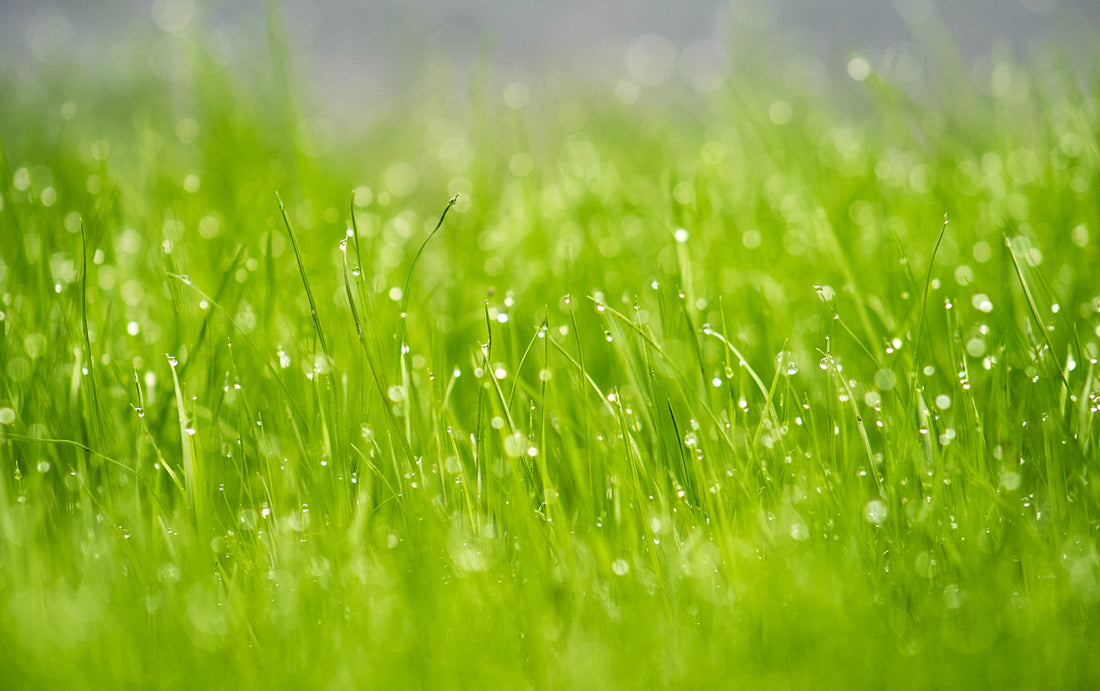
No Mow May: Embrace the Wild Side of Your Lawn in May
SHOO-FOO TeamShare
And now it's spring and the month of May. The days are getting longer, the sun is shining, the flowers are blooming, and the grass is growing. This sudden mildness of the days announces to gardeners that the time has come to get out their mower and put their lawn in order.
Let's Do No Mow May!
Instead of grabbing your lawn mower, why not take part in No Mow May this year? No Mow May is a movement that encourages us to let our lawns grow freely for the whole month of May. The goal is to provide habitat for pollinators such as bees, butterflies, and other insects essential to our ecosystem.
The movement was started in the UK by a non-profit organization called Plantlife in 2018. The aim is to raise awareness of the importance of wildflowers and declining pollinator populations in the UK. The idea caught on and today No Mow May has followers in several countries, including the United States, Canada, and most European countries.
How does it help the pollinators?
The most important reason to participate in No Mow May is to make life easier for pollinators. Bees, butterflies, and other insects play a crucial role in pollinating our crop fields and producing our food.
Unfortunately, populations of many of these pollinators are declining due to factors such as habitat loss and pesticide use.
By participating in No Mow May and refraining from mowing our lawns in May, we allow grasses and flowers to grow and bloom. This flowering provides an essential food source for bees, butterflies, and other pollinating insects. Nectar and pollen from flowers in our lawns provide insects with important energy support in early spring when other sources of pollen (from trees) are not yet available.
Biodiversity
Also, by allowing the grass to grow uncut from the first rays of spring, it creates a richer and more diverse habitat that will be conducive to pollinators. The tall grasses offer a choice of shelter and nesting sites for several types of beneficial insects. While a greater variety of grasses and flowers attract a wider range of pollinator species.
Knowing that some bees nest in the ground, it is easy to understand that frequent mowing during the nesting period can destroy their nests and disrupt their reproductive cycles. While a month without mowing will bring greater stability to their life cycle.
Overall, No Mow May is a simple yet effective way to provide habitat and a food source for pollinators. By letting your lawn run free during the month of May, you can have a positive impact on the environment and support these essential species in our food chain.
Healthier Lawn
But it's not just about pollinators. Allowing your lawn to grow and flower freely for a month can also improve soil health and reduce water usage for watering No Mow May will help make your lawn healthier!
Indeed, mowing your lawn too often or too early in the spring is often harmful to the grass, making it weaker and more susceptible to disease. It can also damage the soil by pulling out the roots and exposing the soil to the elements.
By refraining from mowing your lawn in May, you will allow the grass to establish deeper roots that will allow it to grow stronger and more resistant to stressors like drought and foot traffic. Additionally, tall grasses can help retain moisture in the soil and prevent erosion.
One Month Makes A Difference
If you're worried about your lawn getting neglected and having a hard time sprucing it up, fear not. No Mow May isn't about giving up your lawn; it's about letting it grow and flourish for a month. You might be surprised at how beautiful your lawn can look when left to its
What to Do in May if Not Mowing Grass?
Here are some simple steps to follow to participate in No Mow May:
- Put your lawn mower away for the month of May. If you have a neighbor who mows your lawn for you, give them a month off.
- Resist the urge to tidy up your lawn for the month. Let it grow and bloom naturally.
- Watch for changes in your lawn throughout the month. You might be surprised at the variety of flowers that call it home!
- Spend time in the wild lawn with your children or grandchildren. It's a great way to educate them about the importance of pollinators and biodiversity. Introduce them to the different types of flowers and grasses that grow on your lawn and the insects that depend on them for survival.
- Consider creating a corner on your piece of land to plant pollinator-friendly flowers. Some good options include lavender, sunflower, and milkweed.
- Share your No Mow May experience with friends, family, and neighbors. Encourage them to participate as well and help raise awareness about pollinator conservation #NoMowMay
Discover what else we care for ?

